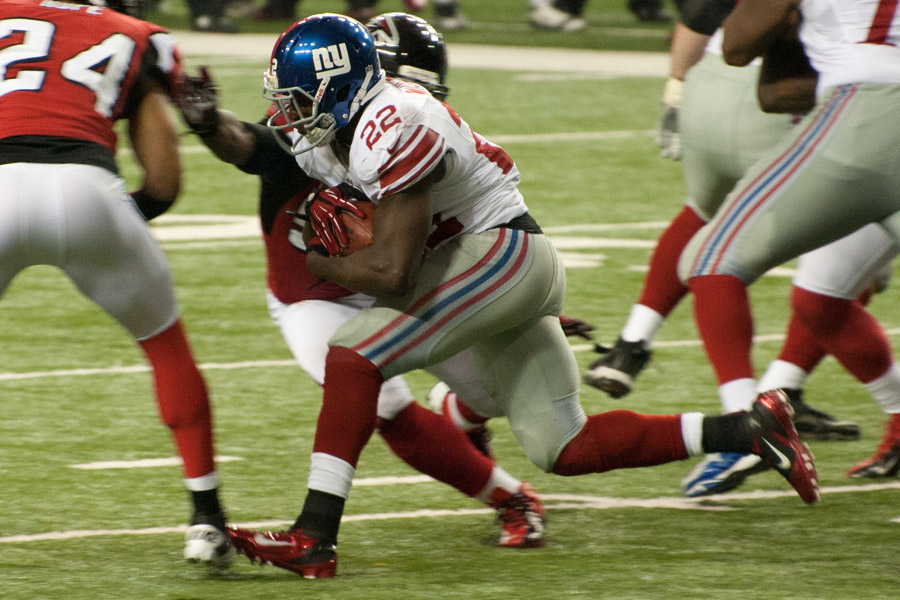
RSP Sample: Texans’ New Starting QB Case Keenum
[youtube=http://youtu.be/LZ8F04L1Mys]
Keenum was my No.14 QB in the 2012 Rookie Scouting Portfolio. Here is what I wrote about the former Houston Cougar who Wade Phillips believe has the potential to achieve career heights similar to Tony Romo. At the end of this profile is a sample report on Keenum.
14. Case Keenum, Houston (6-0, 208) – Keenum has a quick, over the top release. He’s an anticipation thrower and not as likely to gun the ball into tight spaces from difficult angles or distances. He’s an effective down field thrower of the football because of this anticipation and his touch. He places good arc on throws and has a knack for dropping the ball over his receiver’s shoulder in tight coverage.
Keenum can throw the ball more than 40 yards down field, but he didn’t demonstrate the ability to drive the ball with power on deeper routes. When he doesn’t throw the ball with good anticipation, his high arcing passes can get him into trouble on deeper routes because he brings coverage back into the play and creates unnecessary jump-ball situations. I think the extent of his range is probably 45 yards.
I’m also uncertain about his ability to drive the ball on intermediate routes, which will be important for him to make plays against defenses that force him from the pocket or paint him into a corner. He sees the field well enough to find receivers in a reasonably crowded pocket and he can throw the ball off his back foot and from different angles. He throws well moving to his right.
However, Keenum was frequently too aggressive on plays where he should have either thrown the ball away, tried to elude pressure, or tuck the ball and run. He had a few throws that he put up for grabs. It was as if his answer every time he was pressured was to throw the ball at least 15 yards down field and usually 40.
His play action game needs work and he was under center only once in the game I scored. The big questions are whether he can execute a pro style game from center, make the requisite power throws, and learn to make better decisions with the football under pressure. I don’t think the NFL is going to give him a chance, but of the quarterbacks I studied, he flashes enough skill to earn a spot late on this list and at least a camp invite.
Sample Play-by-Play Report of Case Keenum
Views – Now This is a Bird’s Eye View!
[youtube=http://youtu.be/-7IVjCQ26pE]
Views – What Would Bob Harris Do?
Yep, that’s the shark move. Boy, I kill myself sometimes . . .
Football Reads
- How Villanova Teaches Route Running – By receivers coach Brian Flinn, a friend of the RSP blog. Well worth read/watching. Many of these drills I see at the Senior Bow from NFL coaches.
- Why I’m Saying Goodbye to Football – Roxanne Jones is the founding editor of ESPN The Magazine. I’ve been waiting for this statement from someone within the industry. It probably won’t register until a former player from this generation takes a similar stance.
- How a 5’5″ Basketball Player Trained Himself to Dunk – Not football, but still a fascinating look at physical development, which applies greatly to football.
- The R4 System: R4 stands for Rhythm, Read, Rush, Release, Check it out.
Views – Arkansas RB: “We’re gonna need a bigger boat”
[youtube=http://youtu.be/reROq81-Vm8]
Great call from The Big Lead on the (unfortunate) uncommon sense that Jadeveon Clowney’s draft stock hasn’t moved a millimeter. He just pushed three-fifths of the Razorbacks’ offensive line into the backfield on a run play, Only major off-field issues would keep me from drafting him in the top-three overall in 2014.
Views – Funny/True: A Lobbyist And a Senator Walk Into a Restaurant
[youtube=http://youtu.be/Hy9_fsL6uS8]
Non-Football Reads
- Your Brain Needs More Downtime Than It Thinks – Brought to you by the Sigmund Bloom School of Efficiency.
- How Oreos Work Like Cocaine – If they were illegal my dad would be robbing convenience stores to pay his dealer.
- Gamers Solve Decade-Old HIV Puzzle in 10 Days – Sponsored by the Joe Bryant Night School of Real Genius.
- What Happens If The Movement to Label GMOS Succeeds? I don’t know, transparency? What could be bad about that?
- TED Talks Are Lying To You – It’s becoming trendy to rip on TED Talks. Perhaps its unfair or maybe it’s just the universe balancing its scales.
- Philadelphia’s Finest? – I knew a detective with the Philadelphia P.D. during the Rizzo Era. According to him, this video is a mild example of the shield’s pervasive culture of racism.
- Interview with Nazi leader Goering’s Great-Niece – Family and blood are often two different things. Just another fascinating example.
- What Is ‘Evil’ To Google? – Some moral philosophy with your coffee.
Listens – Ornette Coleman (Light Stretching for the MInd/Soul)
[youtube=http://youtu.be/RUknEreFHNg]
Thanks for reading and stay tuned tomorrow for my take on Arizona State defensive tackle Will Sutton in my Futures column at Football Outsiders.













